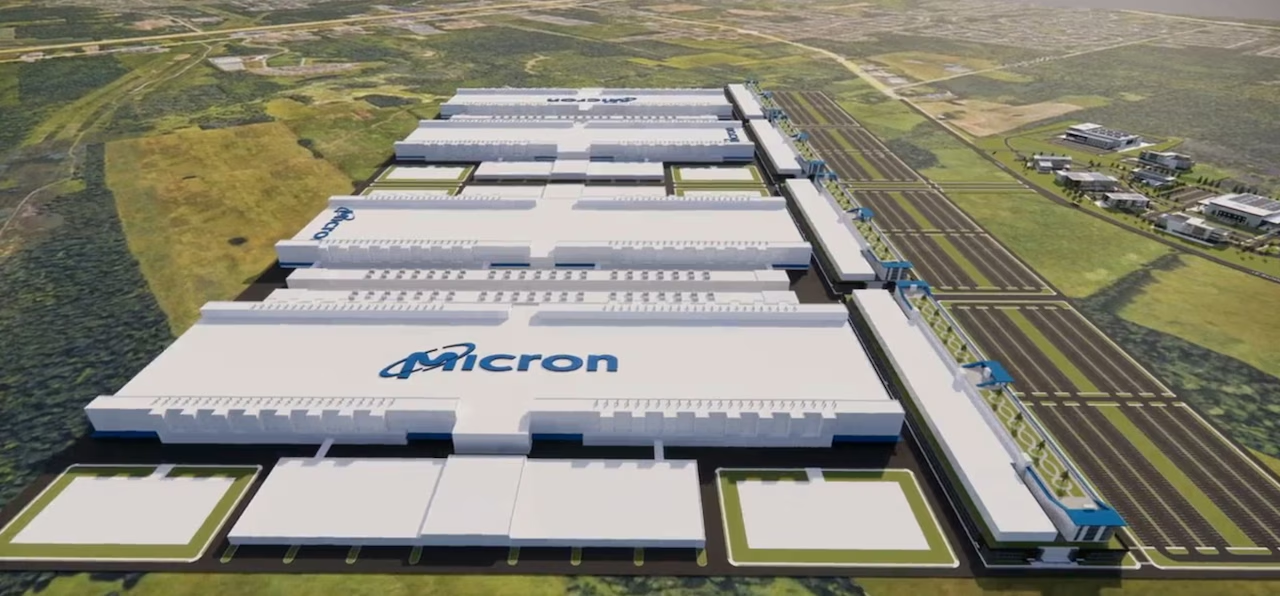
Micron Technology announced significant delays to its massive semiconductor fabrication facility in New York, pushing construction timelines back years and fundamentally altering project schedules through 2045. The revised timeline, released November 7, 2025 in Micron's Final Environmental Impact Statement (FEIS), reveals the complexities of managing ultra-large industrial projects and the cascading effects delays have on construction planning.
Micron Technology's semiconductor fabrication campus in Clay, New York represents one of North America's largest construction undertakings in recent years. The facility ultimately aims to generate more than 9,000 permanent onsite operational jobs by 2045. The project encompasses four fabrication plants (fabs), childcare facilities, healthcare centers, recreation facilities, and supporting infrastructure.
This is far more than a construction project—it's an economic transformation initiative for the central New York region. The delay announcement therefore carries significant implications not just for construction contractors but for the local economy and workforce planning.
The FEIS released Friday outlined substantially delayed construction schedules for all four fabrication units:
Full ramp-up to four-fab production capability: 2045 (maintained from original DEIS schedule)
The delays stem primarily from utility infrastructure requirements needed to support the massive fabrication facilities. Semiconductor fabs are among the most utility-intensive industrial facilities, requiring massive quantities of electricity, water, process chemicals, and specialized infrastructure.
The company explained that the revised construction schedule reflects the reality of securing adequate utilities to support each fabrication unit's operation. Projects cannot begin fabrication operations without verified utility capacity and infrastructure in place, a critical lesson for contractors managing large-scale industrial projects.
Because the fab construction and opening timelines shifted, the entire campus development schedule adjusted accordingly:
This cascading effect is typical for megaprojects—when core activities shift, all dependent activities must also shift. For construction planners and subcontractors bidding on these phases, understanding these dependencies is critical.
The revised timeline extends the overall Micron campus project through 2041 with full ramp-up by 2045. This creates a 20-year construction and operations development pipeline that offers both opportunity and challenge for contractors.
Contractors can now plan with greater clarity on when specific phases will occur, though timing changes should be expected. The FEIS states that construction will occur "in stages over about 16 years and be subject to the receipt of applicable permits and approvals."
The multi-year delays mean that contractors positioned for early-phase work in 2026 have extended timelines. This provides opportunity for contractors to maintain resources or reallocate them to other projects, then redeploy when the Micron phases begin.
The delay rationale—insufficient utilities—highlights the critical importance of pre-construction utility planning and capacity verification. Contractors and engineers should ensure that utility infrastructure is fully designed and committed before fab construction begins.
For contractors bidding on utility infrastructure work associated with the facility, this represents significant opportunity. Micron's utility demands will require substantial infrastructure upgrades in central New York.
The original and revised schedules indicate that Micron planned to employ thousands of construction workers across the 16-year construction timeline. The revised schedule creates a more staggered workforce requirement, which could benefit contractors but also creates scheduling challenges.
The delay also impacts the anticipated 9,000 permanent onsite operational jobs. Instead of these jobs arriving by the original timeline, they now phase in more gradually through the 2040s.
The Micron Clay, New York facility is part of the company's major expansion initiative, with significant federal support through the CHIPS and Science Act. The CHIPS Act provided federal funding to encourage semiconductor manufacturing in the United States, addressing national supply chain security concerns.
The fact that even CHIPS Act-supported projects experience multiyear delays suggests that the challenges facing megaprojects extend beyond any single company or project. Challenges include:
The delays also affect economic projections for central New York. The revised timeline means that the full economic benefit of 9,000 permanent jobs extends further into the future, and the construction employment period spans a longer timeframe with lower year-to-year workforce demands.
However, the fact that Micron has confirmed and refined—rather than cancelled—the project is positive news for the region's long-term economic development.
The Micron project revision offers important lessons for contractors and developers managing large-scale projects:
Do not assume utility infrastructure will be available when you need it. Plan utility requirements early and verify capacity and timeline commitments before finalizing construction schedules.
Multiyear projects will experience timeline adjustments. Build schedule flexibility into project planning to accommodate inevitable revisions without derailing overall delivery.
When core elements shift, communicate impact to all dependent phases and stakeholders. The Micron FEIS effectively explained how fab delays cascade through childcare, healthcare, and warehouse timelines.
Even CHIPS Act-supported projects face delays. Federal funding addresses financing but not underlying project complexities like utility infrastructure, permitting, and supply chain challenges.
Despite the delays, the project remains one of the construction industry's most significant opportunities. Over 16 years, the project will involve substantial construction work across:
For contractors in the central New York region and those with semiconductor manufacturing expertise, the Micron project represents a generational opportunity—even with revised timelines.
Source: Micron Technology Final Environmental Impact Statement (FEIS), November 7, 2025 | Spectrum News Report, November 7, 2025 | Micron Technology Official Timeline Release
Syracuse Housing Authority finances Phase 2 of East Adams redevelopment. $100M+ project creates 125 senior affordable apartments on remediated brownfield. Vertical construction begins early 2026.
Governor Hochul awards $10M from East Side Building Fund to 35 Buffalo commercial and mixed-use projects. Funding supports facade renovations, adaptive reuse, and new mixed-use development across East Side priority corridors.
Rochester launches $60M convention center renovation. Downtown Joseph A. Floreano Riverside Convention Center undergoes comprehensive modernization including interior systems, lighting, HVAC, and equipment. Construction phases planned 2029-2033.